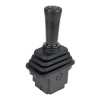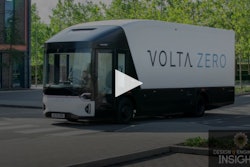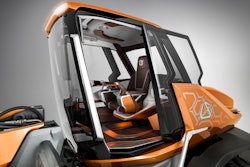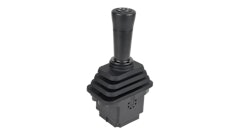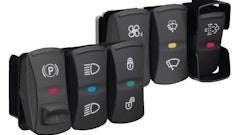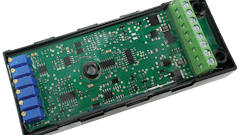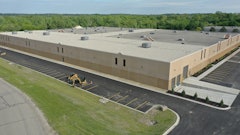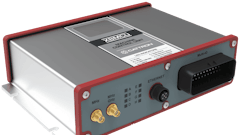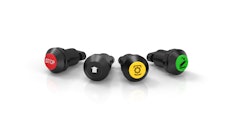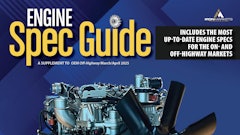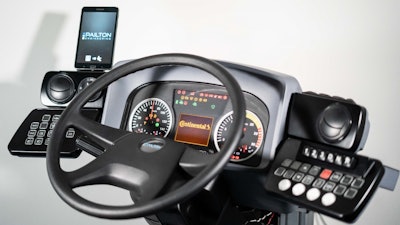
Professional drivers are at a higher risk of developing musculoskeletal pain due to prolonged sitting, vibration, awkward posture and repetitive actions. Here, Kostas Poulios, Principal Design & Development Engineer at steering system specialist Pailton Engineering, examines the situation from the vehicle design stage, and argues the importance of fully adjustable driver workstations.
Drivers are in the cabin for 8 hours a day. The bus is their workspace, and operators are beginning to see the importance of creating a workspace that the driver can be proud of. The entire vehicle cabin should be, and can be, as ergonomic and adjustable as the conventional office workplace. Just as an office worker has the flexibility to change seating position, adjust screen height and keyboard location, the bus driver should feel just as comfortable and physically supported.
If we are going to keep commercial drivers safe and healthy, design engineers need to factor in a higher level of ergonomic consideration in the early design stages. Ergonomics is the science concerned with the fit between people and their work. It puts people first and aims to ensure the equipment and environment fits the human. In an office space, it is already well appreciated that ensuring an employee’s workstation is comfortable will enable better work and healthier staff in the long-term, but for drivers of commercial vehicles, such considerations have been lacking.
A customized workspace aids comfort and productivity
Until recently, an adjustable seat, mirrors and steering column was as far as adjustment went. However, data has shown this isn’t sufficient. Depending on the person’s size and height, certain gauges could be left out of comfortable eyeline, or the driver may strain to reach controls and switches. Over time, recurring strain to check speed, tire pressure and other driving data could result in long-term musculoskeletal disorders.
In August 2020, a metanalysis study collated the findings of 56 studies across 23 countries on driver health. Data of a total pooled population of 18,882 professional drivers was analyzed for musculoskeletal pain. The prevalence of such pain ranged between 43.1 and 93%. Lower back was the most frequently reported body region for pain with a rate of 53%. Neck, shoulder, and upper back were the other common regions with high prevalence, indicating that more needs to be done.
The office cab concept counteracts this issue. Rather than considering the steering column and dashboard as two separate entities, where the steering column is adjustable and the dashboard is fixed, they work in conjunction with each other. By building a full dashboard assembly, the entire dashboard is adjustable in both the tilt and telescope direction. When the driver adjusts the steering wheel, the dashboard follows that adjustment, ensuring the driver can reach all the switches and see all the gauges without strain.
This paradigm has changed the engineering requirements of steering columns. Going forward, as more vehicle original equipment manufacturers (OEMs) follow suit, the interface between the steering column and the dashboard will likely require bespoke design, as catalogue steering parts may not interface the dashboard correctly. For Pailton Engineering, this trend is exactly its forte.
Yet for commercial vehicle operators, the thought of fully adjusting the entire cabin environment, including seat, mirrors, steering column and dashboard, for every driver on every shift, may sound too time consuming and costly. They may question the long-term health and safety benefits of ensuring every driver is in the optimal driving position, compared with the time and energy expended on these recurring adjustments.
Luckily for the concerned fleet managers, new automation is making this higher level of cabin adjustment easier and faster. Pailton Engineering is developing an electric memory steering column for commercial vehicles, based on technology nurtured in the automotive sector. The technology, in collaboration with Continental and seat manufacturer Isri, has made the entire cab environment adjustable with the touch of a button.
Most impressive is the memory feature of this technology. A driver can scan their key fob upon entry, and the steering column, dashboard, mirrors and seat will adjust to the driver’s pre-recorded ideal position. This removes the human error of a driver adjusting a pneumatic column to where they ‘think’ is correct. Suddenly, concerns over time expenditure are no longer valid. This technology improves driver ergonomics without the hassle of manual adjustment.
This also brings with it traceability benefits. If a driver is off work with back pain for example, records can indicate how their cab environment was set up, ruling out poorly suited driving conditions as the cause.
While the link between professional driving and musculoskeletal pain is well researched and proven, it doesn’t mean the industry cannot do something about it. With novel design concepts, such as the driver workstation, OEMs can build workplaces for drivers to be proud of.
This article was contributed by Pailton Engineering which designs, tests and delivers steering systems, using state-of-the-art CAD (Solid Works), purpose designed and built test facilities, and state of the art manufacturing capabilities.
